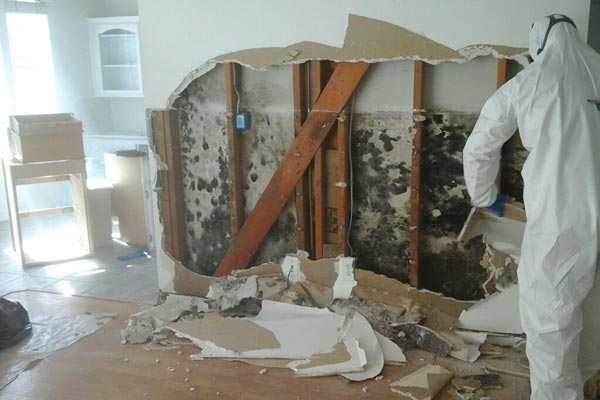Mold growth in homes is a serious issue that needs to be properly remediated to prevent health risks and structural damage. However, mold often hides behind walls, within insulation, and behind cabinets – making it difficult to locate and remove completely. Inspecting for hidden mold during professional mold remediation is essential to ensure all contaminated areas are properly treated.
Why Mold Grows Hidden
There are several reasons mold grows inside hidden areas of the home:
•Issues with ventilation. Areas like crawlspaces, attics and wall cavities often lack proper airflow, allowing mold to thrive undetected.
•Behind wall/floor surfaces. Mold can grow behind drywall, tiles, and wooden subfloors where it is out of sight.
•Within wall/ceiling cavities. Cavity spaces between studs or joists provide mold ideal conditions to grow undisturbed.
•Around insulation. Moisture can become trapped within insulation, causing hidden mold growth over time.
•Behind wood cabinets. Cabinets and furniture block access to mold that may be growing on backsides and undersides.
Locating Hidden Mold
During mold inspection and remediation, professionals use tools and methods to locate mold that may be hidden:
•Visual inspection. Technicians carefully examine all wall and floor surfaces for visual signs of mold like discoloration and bubbling.
•Infrared cameras. Thermal imaging detects temperature differences that indicate potential mold behind surfaces.
•Moisture meters. These meters locate moisture trapped within walls that may be feeding hidden mold growth.
•Boroscopes. Small cameras on flexible tubes allow inspection of inaccessible wall and ceiling cavities.
•Air quality meters. Also, Elevated mold spore counts indicate the likely presence of hidden contamination.
•Occupant interviews. Also, Reports from occupants of musty odors or other clues point to areas needing further inspection.
Once located, technicians make small openings to fully expose any hidden mold so it can be effectively cleaned and contained. After remediation, any openings are properly sealed.
Benefits of Finding Hidden Mold
Locating and treating mold that is hidden from sight offers important advantages:
•Complete contamination removal. All contaminated materials are removed so there are no remaining mold spores.
•Addresses moisture issues. Also, The moisture sources feeding hidden mold are identified and properly resolved.
•Prevents future growth. Ridding hidden areas of existing mold helps stop mold from recurring in those locations.
•Improves indoor air quality long-term. Also, By eliminating hidden sources of toxic mold spores, occupants breathe easier.
•Protects structural integrity. Untreated hidden mold can cause damage that compromise the building structure over time.
•Avoids costly repairs later. Also, Catching hidden mold issues early through thorough inspection avoids expensive repairs down the road.
In summary, hidden mold poses serious health risks, damage risks and remediation challenges. Professional mold remediation companies utilize specialized tools and techniques to detect and expose mold growing behind walls, within insulation and other hidden locations. Also, This allows them to thoroughly clean up all contaminated materials and resolve any moisture issues feeding the mold. Also, Taking the time to find and fully remove hidden mold sources ensures the most effective and longest lasting remediation results.

